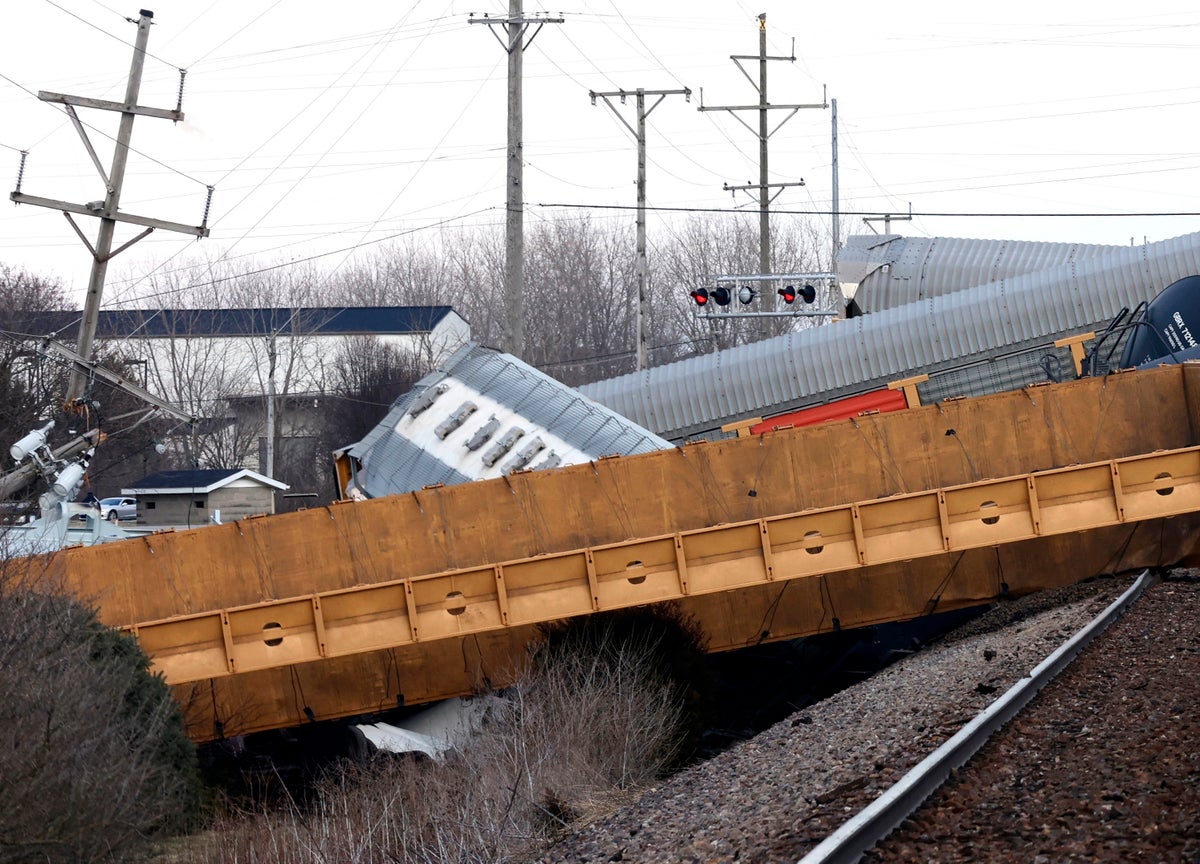
Federal regulators are warning railroads that the long trains they favor can cause all kinds of problems and contribute to derailments, so they want the railroads to ensure their training and operating procedures account for that.
The Federal Railroad Administration stopped short of recommending in its latest safety advisory issued Thursday that railroads limit the size of their trains, which can routinely stretch more than 2 miles long. However, they did suggest a number of precautions including making sure engineers know how to handle them and that locomotives don't lose communication with devices at the end of trains that can help trigger the brakes in an emergency.
Currently, there aren't any restrictions on train length but members of Congress and state lawmakers in at least six states have proposed establishing limits particularly in the wake of the fiery Feb. 3 Norfolk Southern derailment in Ohio. The major freight railroads have pushed back against that idea because they have increasingly come to rely on longer trains to help them move cargo with fewer crews and mechanics as they overhauled their operations over the past six years. Union Pacific CEO Lance Fritz said recently that he doesn't think accident data shows that long trains are riskier.
But the Federal Railroad Administration cited three derailments involving trains longer than 12,250 feet (3,734 meters) where train length was a factor in its advisory. That agency and the National Academies of Sciences are both in the middle of studying the impact of long trains, and they expect to issue reports next year on whether they are a problem.
"FRA believes these incidents demonstrate the need for railroads and railroad employees to be particularly mindful of the complexities of operating longer trains," the agency said.
The derailments mentioned as examples of the problems that can accompany long trains were in Springfield, Ohio, in March; in Ravenna, Ohio, last November; and in Rockwell, Iowa, in March 2022. In each of those cases, the way cars in different parts of the train pulled and pushed against each other contributed to the derailments.
The fiery February derailment that prompted evacuations in East Palestine, Ohio, and sparked a nationwide focus on rail safety wasn't mentioned as an example. The National Transportation Safety Board has said that an overheated bearing that caused an axle to fail on one of the railcars likely caused that derailment.
This latest advisory follows one earlier this month that directed railroads to re-examine the way they assemble their trains to minimize those kind of forces that often come into play as a train goes over hills and around corners. Parts of a train can be pulling forward going up a hill while the middle or back of the train pushes against the rest of the cars while going down a hill.
Those forces make it challenging for engineers to control a train, so regulators said railroads need to adjust their training to make sure their engineers are prepared to handle the monster trains they are operating. The common practice of putting locomotives in the middle of long trains as well as in the front can help manage a long train, but having to control those additional locomotives also complicates the engineer's job.
“A locomotive engineer cannot be expected to safely operate in a more demanding service without proper additional training that covers the unique challenges and complexities those trains present,” regulators said in the advisory.
A spokeswoman for the Association of American Railroads trade group said railroads are already working to manage the challenges associated with long trains and looking for ways to improve safety.
“All stakeholders – the FRA, railroads, and elected officials – share the same goal of continuously enhancing rail safety, minimizing adverse impacts to surrounding communities and keeping the goods that power our economy flowing," AAR spokeswoman Jessica Kahanek said. "The recommendations within this advisory align closely with the prudent steps railroads already take to do just that.”
The Federal Railroad Administration said that in addition to the concerns about derailments, long trains can block crossings for extended periods of time. When crossings are blocked, firefighters, police and ambulance drivers may be delayed in getting someone the help that they need, and pedestrians may risk their lives by crawling under or across stopped trains that could start moving without warning.
The states proposing limits on train size this year include Arizona, Iowa, Kansas, Michigan, Nevada and Washington.







